 |
 |
 |
| |
Hep D Rate 9% in Tested California Safety-Net Group (immigrants, ethnic minorities) With HBV
|
| |
| |
AASLD-The Liver Meeting, November 4-8, 2022, Washington, DC
Mark Mascolini
In a diverse urban safety-net cohort in northern California, 30% with chronic hepatitis B virus (HBV) infection got tested for hepatitis delta virus (HDV) and 9% of that group tested positive for HDV [1]. In comparison, 20% of a large HBV-positive Veterans Affairs (VA) cohort got tested for HDV, of whom 3% tested positive.
A superinfection or concurrent infection with HBV, HDV is linked to higher risks of progression to cirrhosis, hepatocellular carcinoma, and liver-related death, said researchers from Stanford University, VA Palo Alto, and other centers who conducted this study. Yet HDV testing in people with HBV remains inconsistent, and that contributes to poor understanding of HDV's role.
In the United States, one estimate sets anti-HDV prevalence at 5.9% in people positive for hepatitis B surface antigen (HBsAg), which indicates transmissible HBV infection [2]. An earlier VA database analysis of 25,603 HBsAg-positive VA beneficiaries in 1999-2013 found 8.5% tested for anti-HBV antibody, 3.4% of whom tested positive for HDV [3]. In a US Quest lab analysis of 157,333 people with chronic HBV in 2016-2020, 6.7% got tested for HDV, of whom 2.2% were positive [4].
Safety-net health systems focus on underserved populations including many ethnic minorities and immigrants. These groups tend to have high rates of risk behaviors linked to HDV infection. Because HDV remains poorly studied in this group, the Stanford/VA investigators aimed to assess HDV prevalence and risk factors in a large urban safety-net group with chronic HBV and to compare them to chronic HBV-infected individuals in a national VA cohort.
This retrospective study considered people 18 or older with chronic HBV during the years 2010-2021 in a large safety-net health system and the comparison VA cohort. The researchers selected safety-net clinics as those whose populations included large proportions without insurance or using Medicaid. HDV positivity could be established by HDV antibody, HDV antigen, or HDV RNA.
The safety-net system had 884 people with chronic HBV, 54%/46% men/women, 35% black, 29% Asian, 28% non-Hispanic white, 8.7% coinfected with HIV, and 18.2% with cirrhosis. While 40% had no health insurance, 35% used Medicaid, 11% Medicare, and 10% commercial insurance. In the 12,002-person VA cohort, 94%/6% were men/women, 42% black, 10% Asian, 40% non-Hispanic white, 2.3% coinfected with HIV, and 29.4% with cirrhosis. The VA system pays for most care of all these people.
In the safety-net cohort, 30.3% of 884 people with chronic HBV got tested for HDV, and 9.0% of tested people had a positive result. Demographic groups with the highest proportions tested for HDV were Asians (46.4%), people with cirrhosis (45.3%), people with no insurance (33.5%), and people using Medicaid (32.1%). Multivariable logistic regression determined that three groups in the safety-net cohort had independently lower or higher odds of getting tested for HDV:
Lower odds
- Non-Hispanic whites vs Asians: adjusted odds ratio (aOR) 0.47, 95% confidence interval (CI) 0.31 to 0.72
- Blacks vs Asians: aOR 0.45, 95% CI 0.30 to 0.66
Higher odds
- People with vs without cirrhosis: aOR 2.10, 95% CI 1.32 to 3.34
This analysis uncovered no significant differences in HDV testing by age, sex, or insurance status.
In the safety-net group, a higher proportion of blacks than whites tested positive for HDV (15.3% vs 4.3%), as did a higher proportion using Medicare versus commercial insurance (19.0% vs 3.7%) and a higher proportion with versus without cirrhosis (15.1% vs 6.7%).
In the VA cohort of 12,002 people with chronic HBV, 19.7% got tested for HDV, of whom 3.1% tested positive. By age, 26.0% of people 18 to 39 years old got tested for HDV, compared with 21.7% of those 40 to 59, and 18.2% of those 60 or older. A higher proportion of people without versus with cirrhosis got an HDV test (21.3% vs 15.8%). Among racial/ethnic VA groups, Hispanics had the highest proportion tested for HDV (39.4%), followed by Asians (24.1%), non-Hispanic whites (19.6%), blacks (18.7%), and other or unknown racial/ethnic groups (14.8%).
Multivariable logistic regression picked out two demographic variables that independently favored HDV testing in the VA group:
Higher odds
- Asians vs non-Hispanic whites: aOR 1.23, 95% CI 1.05 to 1.45
- People 18 to 39 years old vs 60 or older: aOR 1.53, 95% CI 1.31 to 1.78
Among VA beneficiaries, a higher proportion of Hispanics than whites tested positive for HDV (4.7% vs 2.7%), as did a higher proportion of people with versus without cirrhosis (6.6% vs 2.0%).
In three groups with chronic HBV infection, a higher proportion of the northern California safety-net cohort got tested for HDV than did people in the VA cohort or the Quest lab cohort mentioned above [4]: 30.3% vs 19.7% vs 6.7%. The safety-net chronic-HBV group also had the highest proportion among those tested who tested positive for HDV: 9% vs 3.1% vs 2.2%.
The Stanford/VA investigators suggested the higher HDV prevalence in this safety-net cohort could reflect the medical needs of a population with more immigrants and more risk behaviors linked to HDV. But they cautioned "inherent biases" make it hard to determine just what led clinicians to order HDV tests for safety-net people, and better-targeted testing may have yielded the higher prevalence recorded in this group.
References
1. Wong RJ, Niu B, Zhang Y, Thamer M. High prevalence of hepatitis delta virus infection among ethnically diverse, urban, safety-net populations with chronic hepatitis B infection. AASLD-The Liver Meeting, November 4-8, 2022, Washington, DC. Abstract 20.
2. Stockdale AJ, Kreuels B, Henrion MYR, et al. The global prevalence of hepatitis D virus infection: Systematic review and meta-analysis. J Hepatol. 2020;73:523-532. doi: 10.1016/j.jhep.2020.04.008.
https://www.journal-of-hepatology.eu/article/S0168-8278(20)30220-8/fulltext
3. Kushner T, Serper M, Kaplan DE. Delta hepatitis within the Veterans Affairs medical system in the United States: Prevalence, risk factors, and outcomes. J Hepatol. 2015;63:586-592. doi: 10.1016/j.jhep.2015.04.025. https://www.ncbi.nlm.nih.gov/pmc/articles/PMC4574953/
4. Wong RJ, Kaufman HW, Niles JK, et al. low performance of hepatitis delta virus testing among two national cohorts of chronic hepatitis B patients in the United States. Am J Gastroenterol. 2022 Aug 12. doi: 10.14309/ajg.0000000000001947. https://pubmed.ncbi.nlm.nih.gov/35971233/
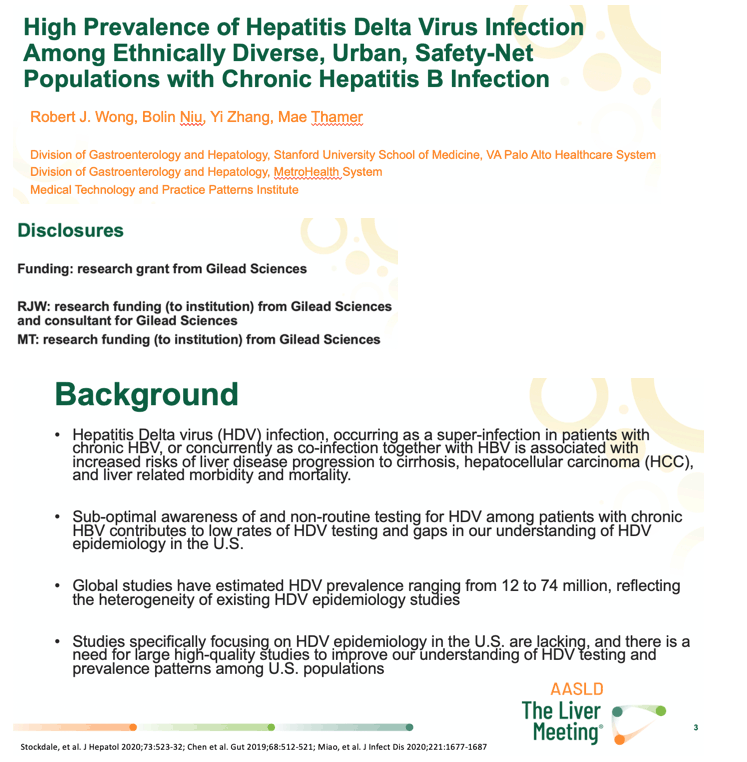
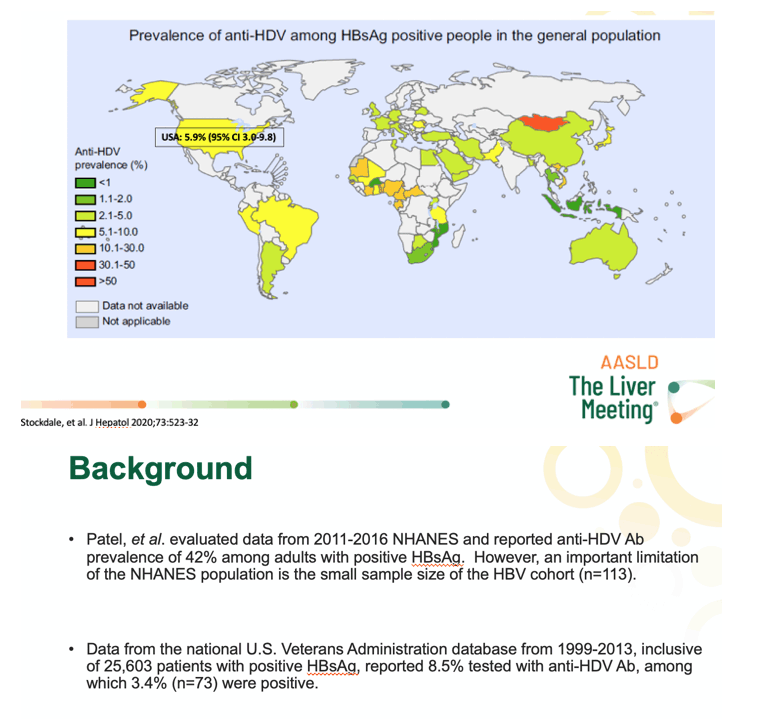
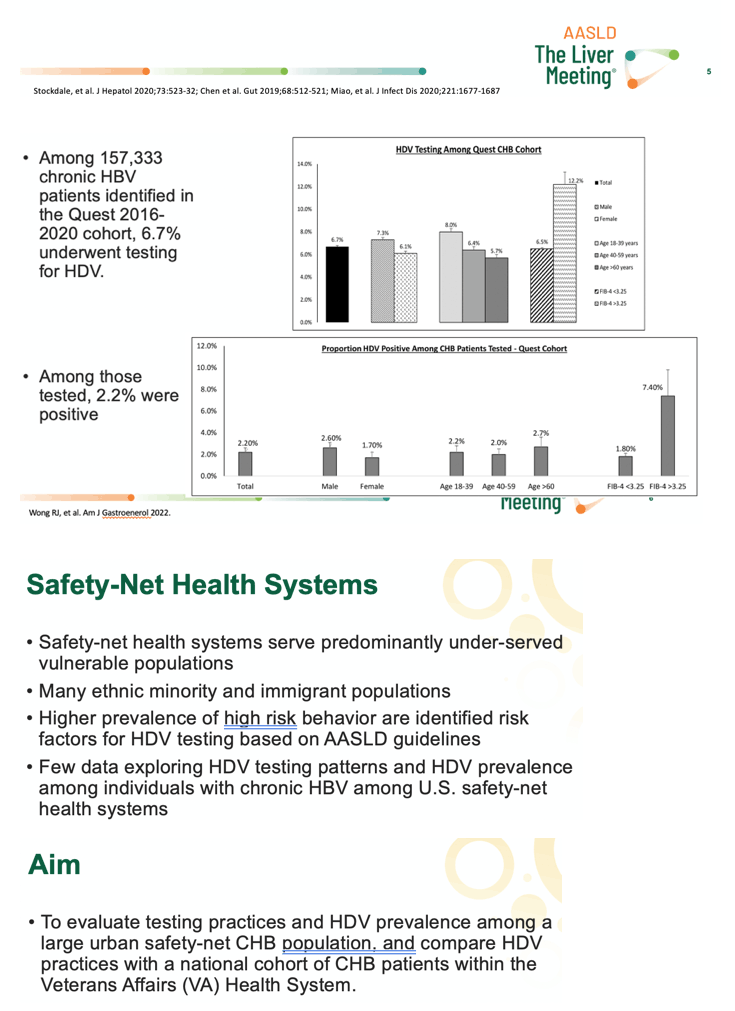
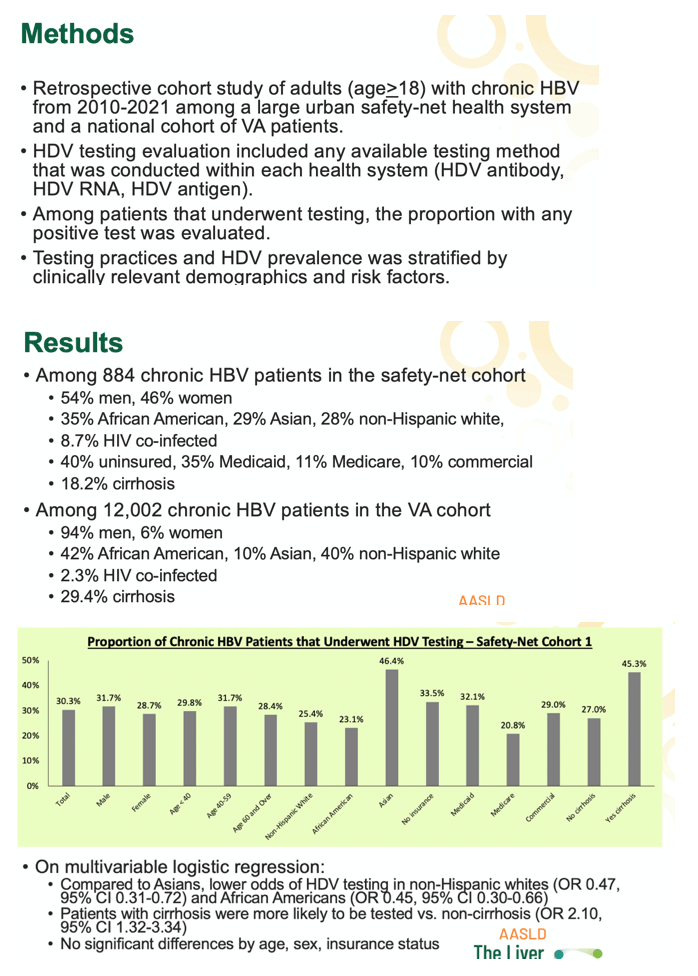
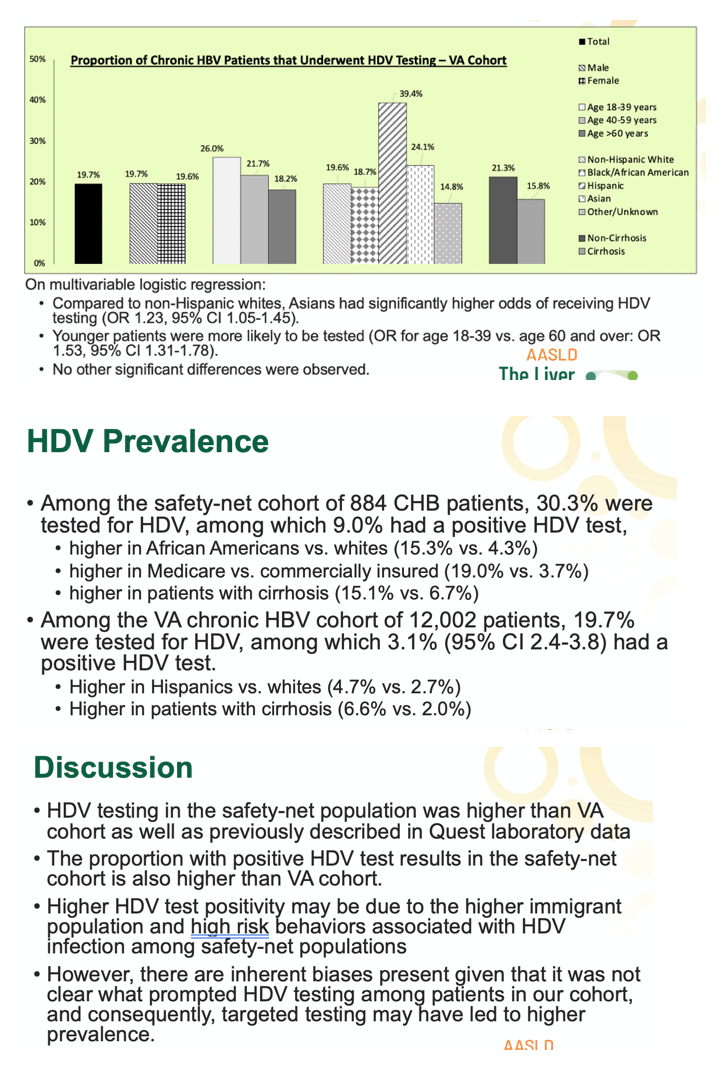
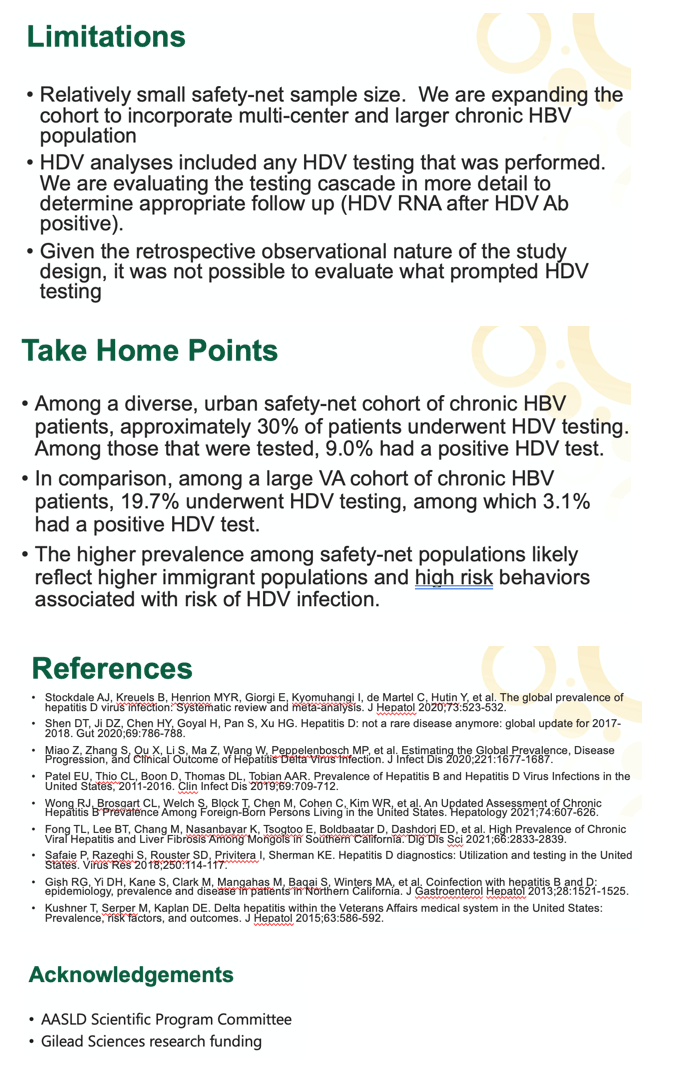
|
| |
|
 |
 |
|
|